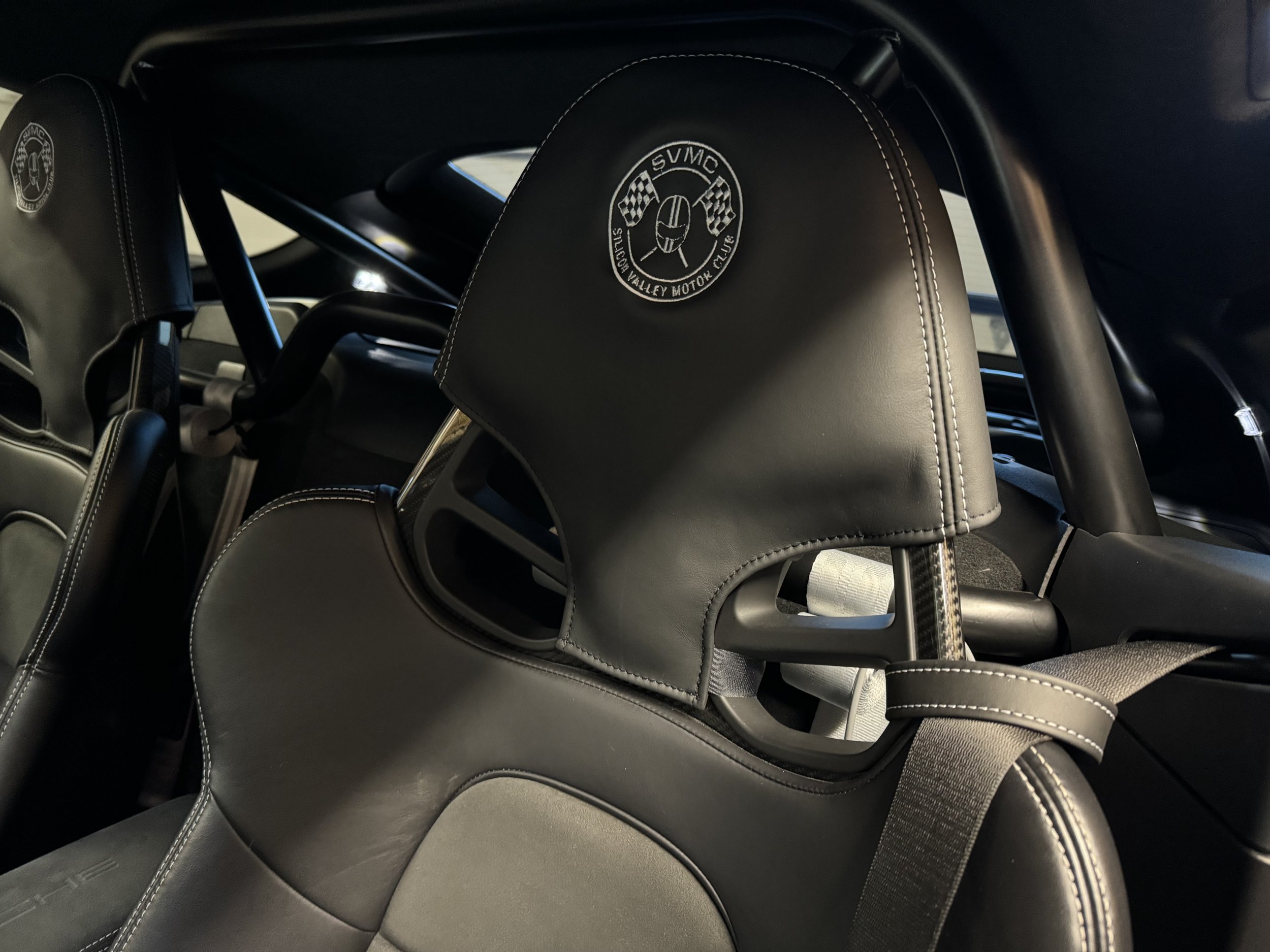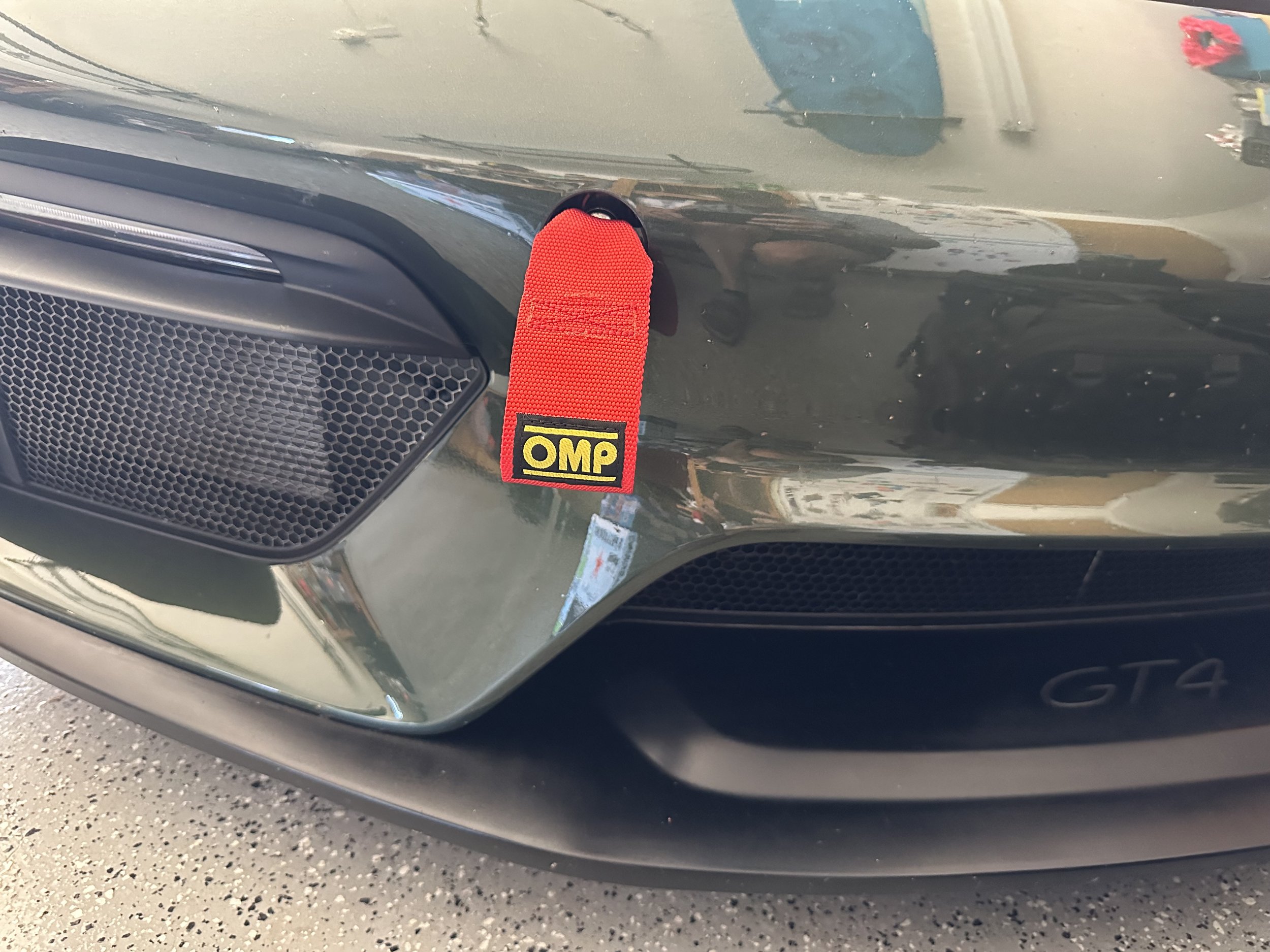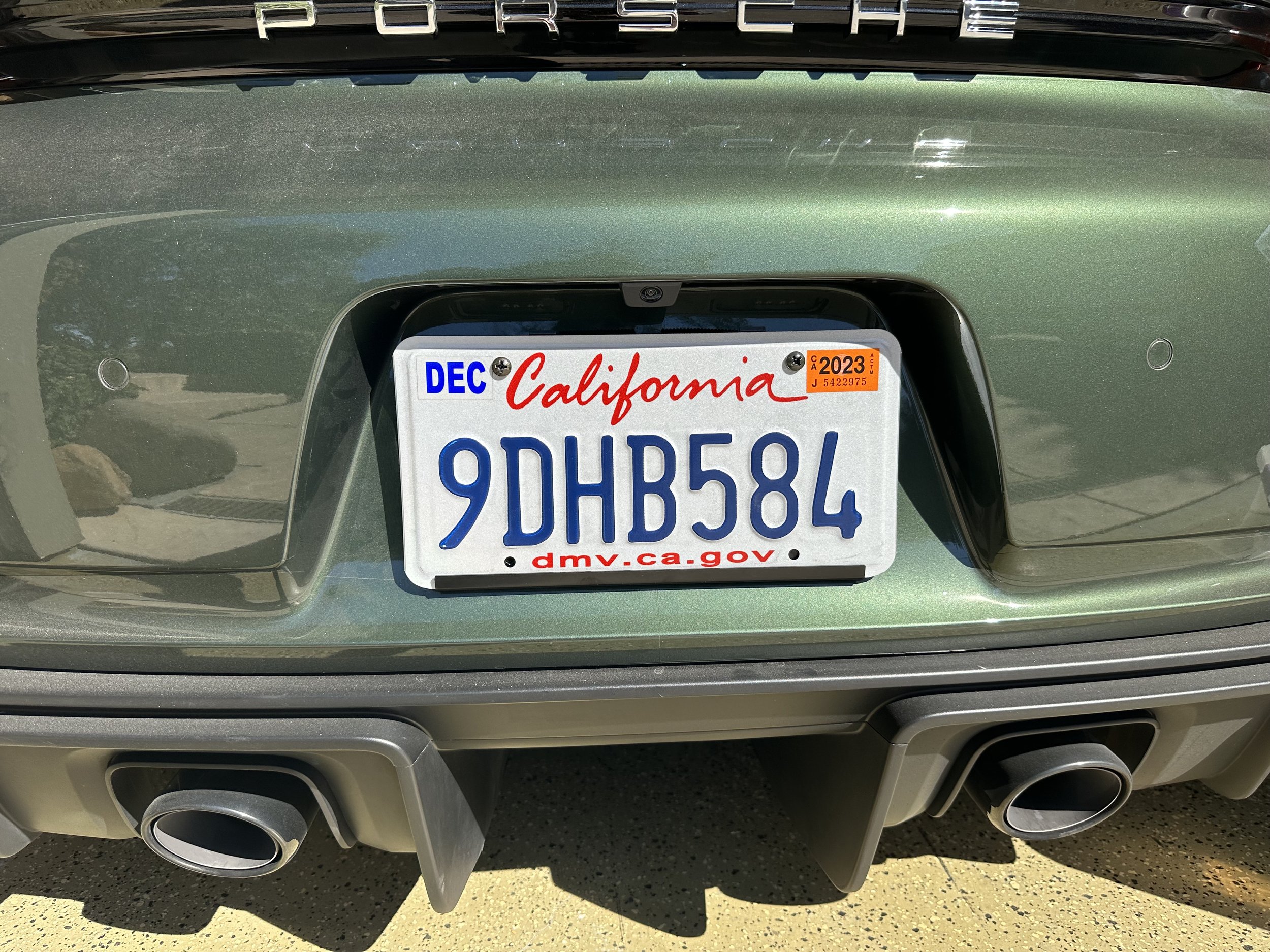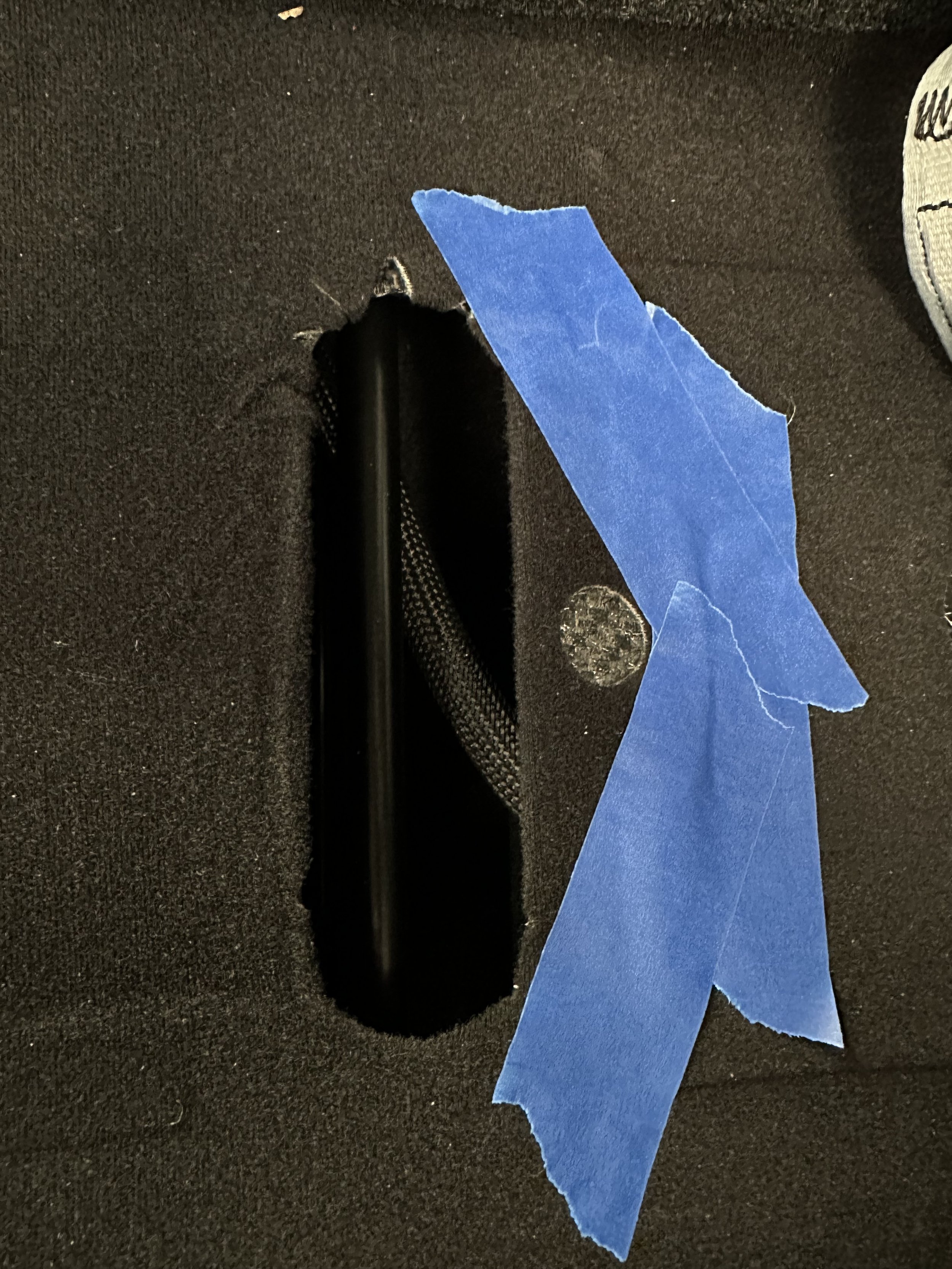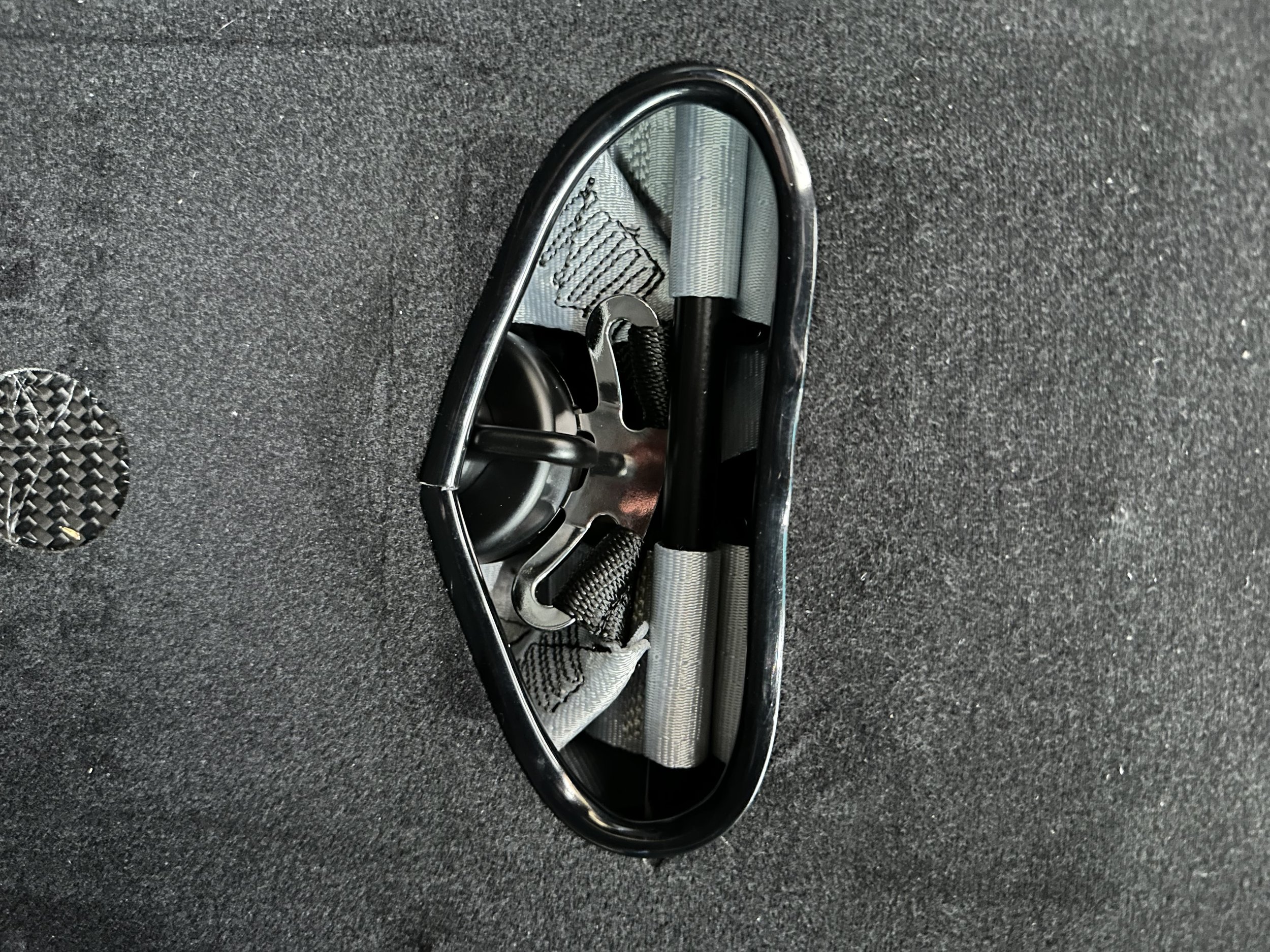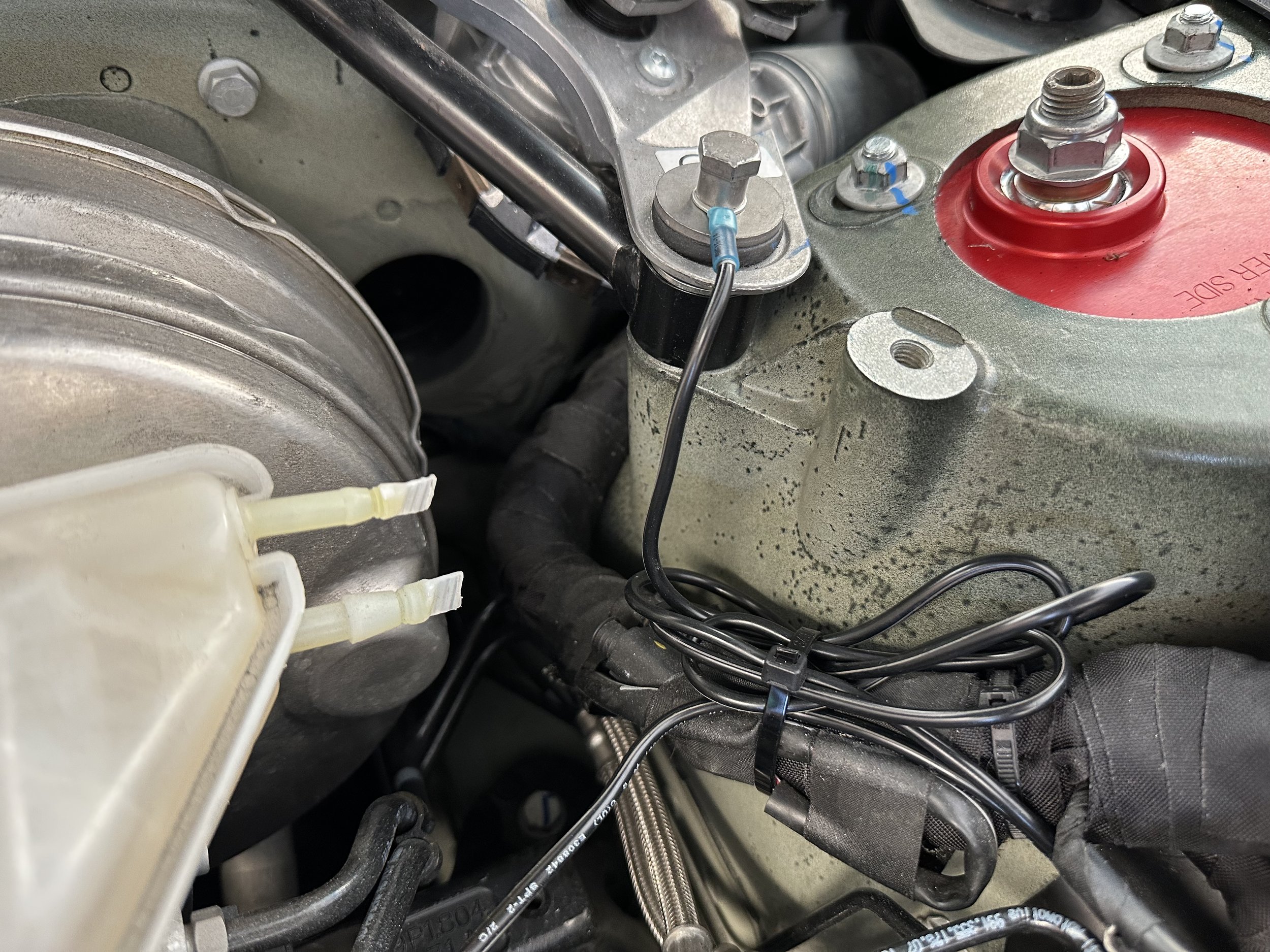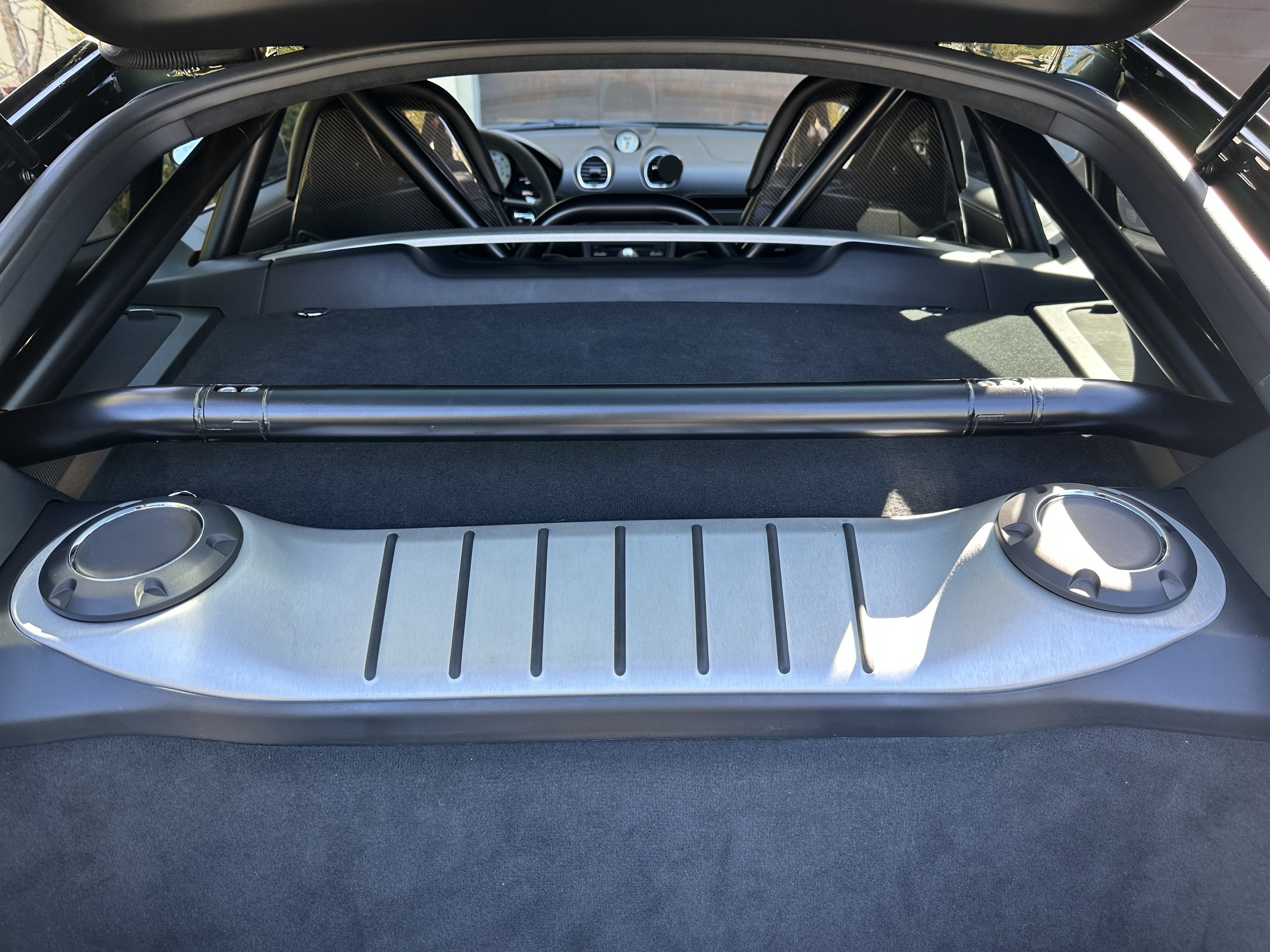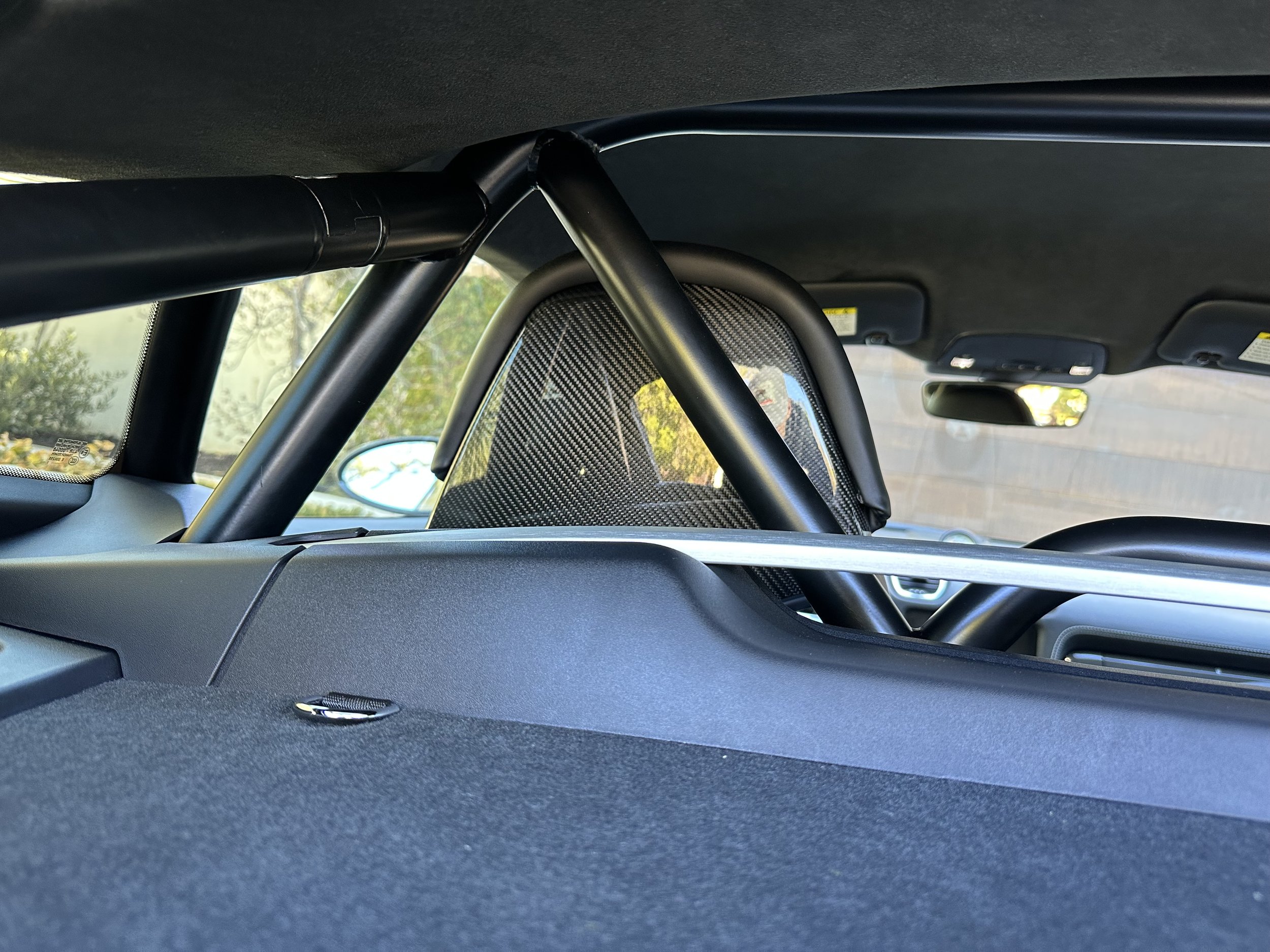The GT3, and some other 911s, have the option for a front axle lift system but the 718 GT4 does not allow for this factory option, at least it didn’t in 2021. I didn’t think it would be much of a problem but I quickly found out otherwise. Speed bumps, driveways, hell even pebbles strike fear into the heart of any GT4 owner. You end up getting use to the scraping sound of the front splitter.
Because this is meant to be a dual purpose car I do want to drive it more on the street but at the moment the race pads (more on that later) and the constant scraping don’t allow it. I looked around and there are a couple different aftermarket front axle lift kits but most are $4k and above. I then found Designs by Jacob’s system that only costs $1,500. The system is rather simply in that it is an air compressor, air cups, some air lines, and a wireless remote. The net result is a simple way to lift the front of the GT4 40-50mm with a push of the button in about 5-6 seconds without sacrificing handling or alignment. The added weight is about 11 lbs in total which is a small weight tax for the added benefit of getting over speed bumps and driveways. Because it is a wireless system you can program the remote into one of your factory garage door buttons on the rearview mirror. You do lose about 20mm of adjustability in your shock but you can make that up by changing out the springs (which I did). After talking to Designs by Jacob I decided to get the front 280 lb springs by Swift which tighten up the front just a touch (stock is 257 lbs springs) but also recapture the lost adjustability caused by the air cups. I should be left with the same ride height I have today but with the courage to drive my car around the streets without fear.
Here are the Swift springs I bought from Designs by Jacob. Aren’t they beautiful?
Here is a short video of the lift in action.
While I was getting the lift kit installed I also swapping out the racing pads (Ferodo DS1.11) for some street pads (Ferodo DS2500). The DS1.11 are amazing on the track but just too loud on the street when cold which is most of the time. To make it easier to swap between the race pads and the street pads I had a stud kit installed for the calipers and the brake line mounts. For the calipers I installed the Girodisc stud kit. For the brake line mounts I installed the Tarett stud kit. I also installed recline brackets on the lightweight bucket seats (LWBS) to better accommodate my helmet when on the track.
All of these changes, plus the new street wheels and tires, are meant to give my car two distinct personalities…..an aggressive daily driver and a track monster.
UPDATE: The front axle lift kit is amazing and well worth the money and effort. The kit comes with two remotes but you can program Porsche’s built-in garage door buttons to activate and deactivate the lift kit. It will require using two of the garage door buttons (out of three), one to lift and one to lower. Also it lifts the front of the car by 2 full inches at the front splitter, and just over 1 inch at the wheel well (see photos below). I have tested it out on a few of my local problem areas on my property and it works great. It takes 4-5 seconds to lift and only about 2 seconds to lower. Also with the front springs changed out we were able to get the alignment to match the pre-kit settings. So no loss of suspension tuning that we can find. Huge fan of the kit!!! During this install we also installed street pads which you can read about here under the 4th update. The quick read is that I love the Ferodo DS2500 pads for the street….no noise. We also installed reclining brackets for the LWBS (race seats). With these you do lose some seat travel, at least I did due to the head rest hitting my half cage. I am guessing we lost about 1-2 inches of rear travel but it wasn’t enough to be a problem. I am 6’1” and I can still move the seat back enough to be comfortable to get in and out and for leg travel between pedals. I am guessing that if you don’t have a half cage you wont lose any seat travel. I do find the seats more comfortable with the recline brackets. You sort of fall into them which makes getting in and out just as hard as before….maybe a touch more difficult. But that is worth the added comfort while driving. It will also make it more comfortable with a helmet and Hans device when on the track. Without the reclining brackets the headrest pushed your helmet forward a bit and after a day on the track I found my neck sore. This should resolve that. So in my opinion, just as other GT3 and GT4 owners have told me, this is a good upgrade.
















